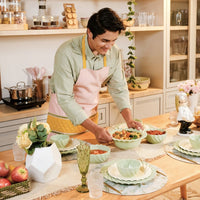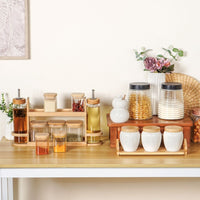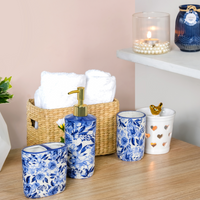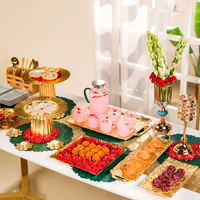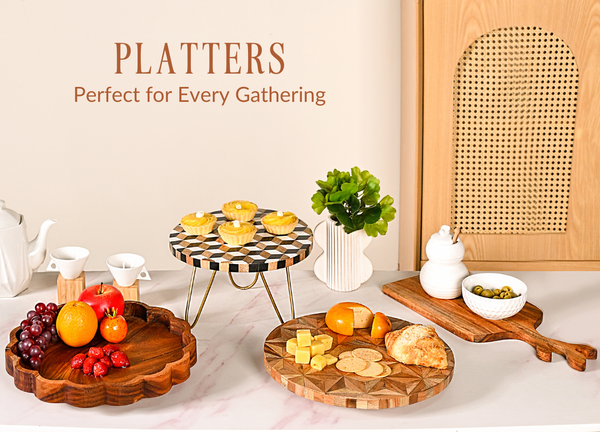One of the earliest materials ever discovered by humans, terracotta exquisitely combines ecology, tradition, and practicality. The earthy charm and natural advantages of this material have endured from ancient civilisations to contemporary kitchens.
HISTORY
Terracotta is basically a material derived from clay baked at a relatively low temperature. It is not simply a matter of substance but deeply rooted in the history of the development of civilisation, creativity and spirituality, and is older than recorded history. Its earliest use is documented during the Prehistoric Era, which was between 29,000 to 10,000 BCE.
The word "terracotta" is derived from the Italian word "terra cocta" which means "baked earth". The use of this substance evolved gradually along with civilisation. The oldest use of terracotta is in the sculpture of Venus of Dolní Věstonice (c. 29,000–25,000 BCE), known to represent fertility.
During the Indus Valley Civilisation (c. 2500 BCE), this common clay was essential to both everyday life and religious rituals. In ancient and medieval India, terracotta was utilised not just for construction bricks and household utensils but also for religious icons and ornamental temple panels.

Although during the early years, terracotta was limited to art and architecture, it gradually shifted from being a symbol of beliefs and ritualistic practices to functionality with the establishment of agricultural civilisation.
As a result of this shift from nomadic lifestyle, terracotta was used to create cooking pots, jars, and other equipment that were necessary for the preservation and storage of food, liquids, and grains.

COMPONENTS & SCIENCE
The process of making terracotta is not rocket science. Even children can easily make it under supervision. The natural clay used to make terracotta is a soft, earthy substance that is created over time by the weathering of rocks that are rich in minerals like feldspar as well as iron.
Therefore, on burning, it turns into a reddish-brown colour. A smooth, workable texture is achieved by kneading raw clay after it has been gathered and processed by soaking it in water and removing stones and other impurities. After it is ready, the clay is shaped to make pots, figurines, tiles, or bricks - by hand, wheel, or mould. At last, the items are left to air-dry to avoid cracking while burning.
Due to the presence of silica, often present in the form of quartz or sand, the items do not shrink. On the other hand, the presence of elements like aluminium makes it hard and heat-resistant. Moreover, since all these components are from within the earth, the utensils made from terracotta are therefore also known as earthenware.

BENEFITS
The components of terracotta are all natural and have no artificial chemicals. Therefore, it contributes significantly to maintaining the freshness and flavour of food.
The earthen utensils are very porous. As a result, moisture and air can flow through its walls. This controls the humidity level and helps avoid accumulation of too much moisture. As a result, pickles and fermented food benefit from this balanced climate that promotes preservation without refrigeration. Moreover, this porosity also keeps dry foods like grains, lentils, and spices fresher for longer.

Terracotta distributes heat evenly and gently when used for cooking, which is particularly advantageous for slow-cooked dishes. The slow, steady heat enhances the flavour of curries, stews, and dals by allowing the spices to gradually release their full potential and makes the food flavourful.
Additionally, rather than drying out food during cooking, the clay retains moisture and steam, keeping it luscious and tender.
Due to its porosity, the evaporation process is very slow, thereby keeping the components cool and fresh.
Earthenware is best used for drinking both hot and cold beverages without having to worry about any toxic chemicals being released into our drinks. In fact, the traditional earthen pots, made from the mineral-rich soils, infuse drinks with rich minerals like calcium, iron and magnesium, which help to flush out toxins from the body.
Our Earthen Textured Terracotta Tumblers are perfect for safe and clean drinking!

Terracotta and Food
Due to its scientific benefits, terracotta or earthenware keeps food fresh and flavourful:
Since terracotta utensils are porous, they preserve the food’s taste by keeping it from getting soggy.
It enhances digestion because of its alkaline features. Eating from it is thought to improve digestion and balance pH in some traditional customs.
Sometimes, a slight earthy flavour is added to the food, giving classic recipes a distinctive and genuine touch. If you too want such traditional flavors playing with your taste buds, our Engraved Terracotta Dinner Plates will serve you just right!
One of the key features of cooking is maintaining the proper heat level overall and cooking in any earthenware distributes heat evenly, which allows the spices and other food ingredients to get cooked thoroughly and develop richer flavours.
The clay retains natural oils and aromas inside the container, improving the flavour every time it is used, particularly in classic slow-cooked recipes.
When soaked in water, terracotta vessels stay cool for hours, helping to preserve freshness, especially useful for storing dairy or fruits. In addition to that, it is ideal to store cool water or desserts.
Our Earthen Clay Terracotta Small Bowls would save you from the last-minute hassle and worry of serving cold desserts to your guests.

Terracotta is known for its low reactivity with ingredients. This means that it preserves the natural flavour of products without changing their composition by reacting neither with acidic nor alkaline foods.
Terracotta is all-natural and toxin-free, preserving not just the taste but also the purity and healthiness of the food.
In conclusion, terracotta enhances food by subtly introducing an earthy taste while also preserving its flavour and freshness. Its permeability, heat retention, non-reactivity, and chilling impact make it a reliable and classic option for cooking and preservation, bridging the gap between natural science and culinary traditions in the most delectable way.
So are you ready to get terracotta crockery?
Well, I am!

